Do you have a question about the Peavey TNT 130 and is the answer not in the manual?
Details the TNT™ 130 bass system, its active circuitry, crossover, and patented DDT™ compression for preventing distortion.
Details rated power, clipping power, frequency response, THD, DDT dynamic range, and hum & noise.
Covers preamp controls, input levels, crossover outputs, and power amp input specs.
Describes the two-position rocker switch and its associated red LED indicator for power status.
Explains the three-position ground switch for eliminating hum and noise, with a note for export units.
Details the patented DDT™ circuit, its LED indicator, and how to adjust controls to prevent constant illumination.
Explains the use of preamp output and power amp input jacks for connecting external effects devices.
Details the variable crossover network for bi-amp functions and recommended settings.
Covers the six EQ controls (Low, Mid, High, Presence, Shift, Bandwidth) and their active circuitry.
Explains how to adjust the extreme high end (treble) for rolloff or boost using the presence control.
Details the high control's operation for adjusting treble response at a lower frequency point.
Explains how these parametric EQ controls shape the mid-band region for versatile tonal response.
Describes the low control for adjusting the low end (bass) response and potential DDT™ interaction.
Explains the function and interaction of the post gain and pre gain controls for overall volume and tone.
Details the high and low gain input jacks, their impedance, and when to use each.
Provides a recommended control setting for achieving a 'Rock' tone.
Offers a recommended control setting for achieving a 'Country-Blues' tone.
Suggests a control setting for achieving a 'Funk' tone.
Details the TNT™ 130 bass system, its active circuitry, crossover, and patented DDT™ compression for preventing distortion.
Details rated power, clipping power, frequency response, THD, DDT dynamic range, and hum & noise.
Covers preamp controls, input levels, crossover outputs, and power amp input specs.
Describes the two-position rocker switch and its associated red LED indicator for power status.
Explains the three-position ground switch for eliminating hum and noise, with a note for export units.
Details the patented DDT™ circuit, its LED indicator, and how to adjust controls to prevent constant illumination.
Explains the use of preamp output and power amp input jacks for connecting external effects devices.
Details the variable crossover network for bi-amp functions and recommended settings.
Covers the six EQ controls (Low, Mid, High, Presence, Shift, Bandwidth) and their active circuitry.
Explains how to adjust the extreme high end (treble) for rolloff or boost using the presence control.
Details the high control's operation for adjusting treble response at a lower frequency point.
Explains how these parametric EQ controls shape the mid-band region for versatile tonal response.
Describes the low control for adjusting the low end (bass) response and potential DDT™ interaction.
Explains the function and interaction of the post gain and pre gain controls for overall volume and tone.
Details the high and low gain input jacks, their impedance, and when to use each.
Provides a recommended control setting for achieving a 'Rock' tone.
Offers a recommended control setting for achieving a 'Country-Blues' tone.
Suggests a control setting for achieving a 'Funk' tone.
| Brand | Peavey |
|---|---|
| Model | TNT 130 |
| Category | Musical Instrument Amplifier |
| Language | English |
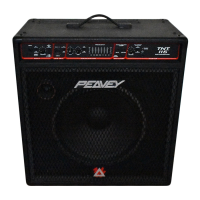
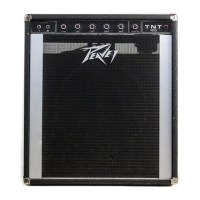
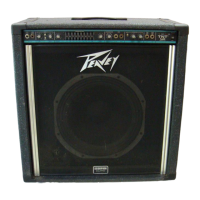



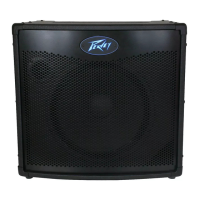
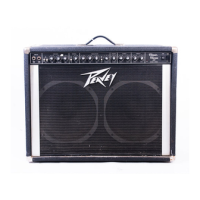
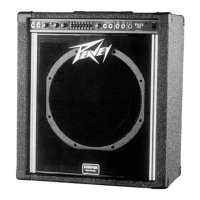


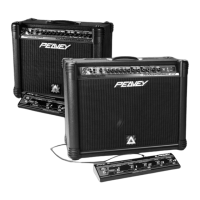
